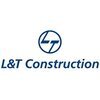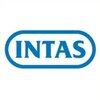

ASC Infratech



ASC Infratech Interview Questions and Answers
Q1. What is inventory
Inventory refers to the stock of goods or materials that a business holds for the purpose of selling or producing goods.
Inventory includes both finished goods and raw materials.
It is an essential part of supply chain management.
Inventory management involves tracking, organizing, and controlling inventory levels.
Examples of inventory include clothing in a retail store, raw materials in a manufacturing plant, or spare parts in a warehouse.

Q2. Type of shuttering material details
Shuttering materials are used in construction to create temporary molds or formwork for concrete structures.
Shuttering materials are typically made of wood, steel, or plastic.
Wooden shuttering is commonly used for small-scale projects and is cost-effective.
Steel shuttering is durable and suitable for large-scale projects.
Plastic shuttering is lightweight and easy to handle.
Other materials like plywood, fiberboard, and aluminum can also be used for specific requirements.
The ch...read more

Q3. Type of Cement grade
There are different grades of cement used for various construction purposes.
Cement grades are classified based on their compressive strength.
The most common cement grades are 33, 43, and 53.
Grade 33 cement is used for general construction purposes.
Grade 43 cement is used for reinforced concrete structures.
Grade 53 cement is used for high-strength concrete applications.

Q4. Type of admixture
Admixtures are materials added to concrete to enhance its properties.
Admixtures can improve workability, durability, strength, and reduce water content.
Types of admixtures include air-entraining agents, water-reducing agents, and accelerating agents.
Air-entraining agents create small air bubbles in the concrete to increase freeze-thaw resistance.
Water-reducing agents reduce the amount of water needed for the same workability.
Accelerating agents speed up the setting and harden...read more

Q5. What is Hira and method
HIRA stands for Hazard Identification and Risk Assessment. It is a systematic process for identifying potential hazards and assessing the associated risks.
HIRA involves identifying hazards in the workplace or environment
It includes assessing the risks associated with each hazard
The goal of HIRA is to implement control measures to mitigate the identified risks
Examples of hazards include chemical exposure, fire hazards, and ergonomic risks

Q6. What is hazards
Hazards are potential sources of harm or danger that can cause injury, illness, or damage to property.
Hazards can be physical, chemical, biological, ergonomic, or psychosocial in nature
Examples include slippery floors, toxic chemicals, infectious diseases, poor ergonomics, and workplace stress
Identifying and assessing hazards is crucial for implementing effective safety measures





Interview Process at ASC Infratech

Top Interview Questions from Similar Companies









Reviews
Interviews
Salaries
Users/Month












